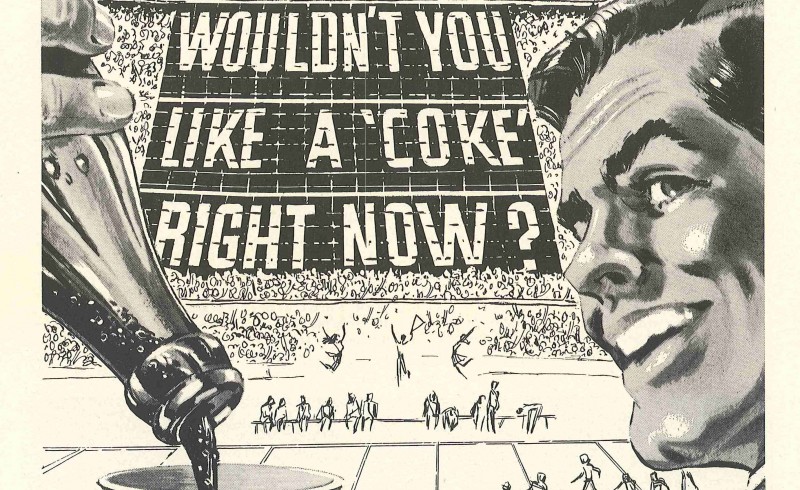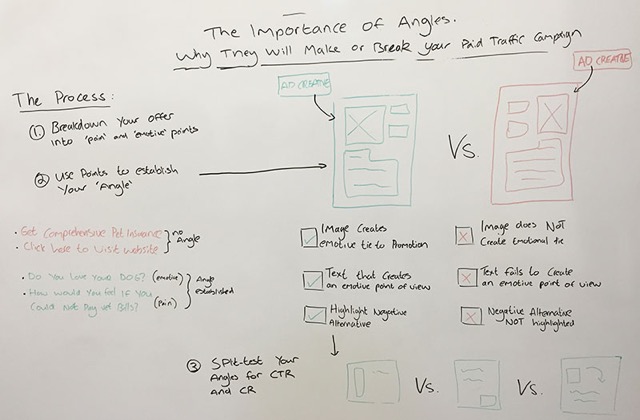
The key to effective advertisement is engagement. How do you successfully capture the attention of your ad-viewers and then turn that attention into valuable actions?
In today’s Monetise Monday, Clive discusses the importance of ‘angles’, what they are, and how to implement them into your ad creatives/landing pages for better click-through and conversion rates.
For reference, here’s a still of this week’s Monetise Monday whiteboard.

An ‘angle’ is a narrative within the advertisement that connects the customer to the product or service on a much deeper level. This is done by manipulating certain ‘pain’ and ‘emotive’ points – striking a resonant chord that allows the customer to recognise something’s value to them personally and prompt a positive action.
A good example to use would be a standard promotion for pet insurance: ‘Get comprehensive dog insurance from a well-known dog insurance company. Click here to visit our website and learn more.’
There’s a number of ways a standard ad and landing page promoting pet insurance can be altered to create an angle that engages the customer more effectively. The first thing we need to do is find possible ‘pain’ and ‘emotive’ points we can highlight in order to establish the angle.
Let’s break things down into identifiable areas we can implement this angle. And it’s important to remember that your landing page content must align with your ad creative, so as to ensure consistent communication along the path to conversion:
Now let’s implement our angle into our pet insurance example: ‘Love your dog? How would you feel if you couldn’t pay your vet’s bills? Click here to protect your loving dog for a small monthly fee.’
As you can see, this is far more engaging than the standard version and more effective at eliciting the desired actions.
Once you’ve established your angle, it’s time to test them in your ad creatives and landing pages. You can split-test imagery and copy in order to determine which word combinations work best, as some emotive words will be more effective than others. When you’ve determined which angle produces the best results, optimise your campaign to increase positive ROI.